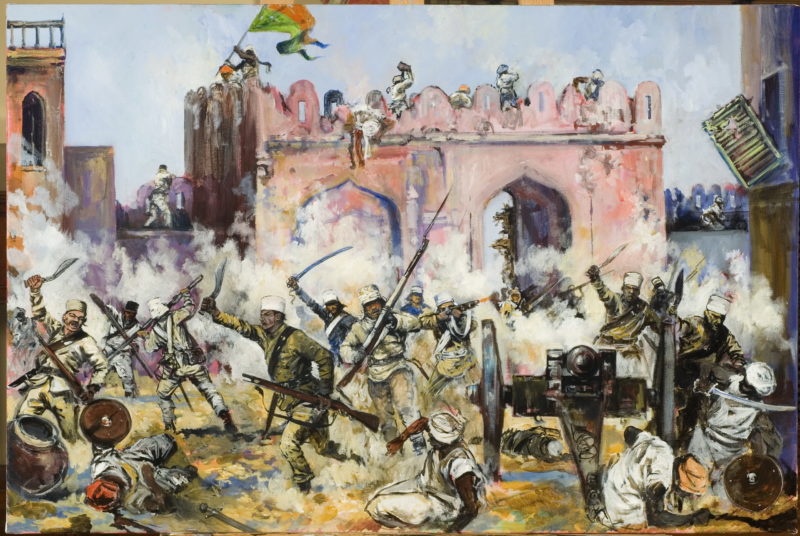Gurkhas and the Siege of Delhi

Gurkhas and the Siege of Delhi
The Siege of Delhi by British forces between June and September of 1857 during what is often referred to as the Indian Mutiny is one of the most important events of that conflict. Troops of the British East India Company’s Bengal Presidency who had rebelled against their British officers as a result of numerous grievances flocked to the city, which quickly became a centre of revolt. British troops sent to regain control of the city, including the antecedents of the modern Brigade of Gurkhas, were met with attacks from both the besieged troops and other rebel forces.
Throughout the siege, units of the Sirmoor Battalion, the ancestor unit of the 2nd King Edwards Own Gurkha Rifles, and by extension The Royal Gurkha Rifles, fought alongside the 60th Rifles and the Corps of Guides at the defensive position known as Hindu Rao’s House outside the city. Eventually British and Indian forces became strong enough to mount an assault and on September 14th an assault composed of four columns of troops was launched. The third of these columns, which included the Kumaon Battalion, an ancestor of 3rd Gurkha Rifles, attacked the Kashmir Gate to the north of the city. This gate was blown open by units of the Bengal Sappers and Miners (antecedents of the Queen’s Gurkha Engineers). The column, along with two of the three others, successfully carried out their assaults.
Whilst initially the assault looked in danger of being repelled, with one British General holding another at gunpoint to ensure that no withdrawal order was given, British troops rallied and pressed forward in the coming days. The city would go on to be captured later that month, after heavy street-by-street fighting.
After Delhi was recaptured and the Mutiny was quelled, a royal truncheon, known as the Queen’s Truncheon, was awarded to the Sirmoor Battalion in recognition of Gurkha service to the Crown, and the Sirmoor Battalion would be recognised as a Rifle Regiment.
Forces of the Nepalese Army also fought during the Mutiny, with Nepalese troops being sent by the Prime Minister of Nepal, Jang Bahadur Rana, to assist the British.

